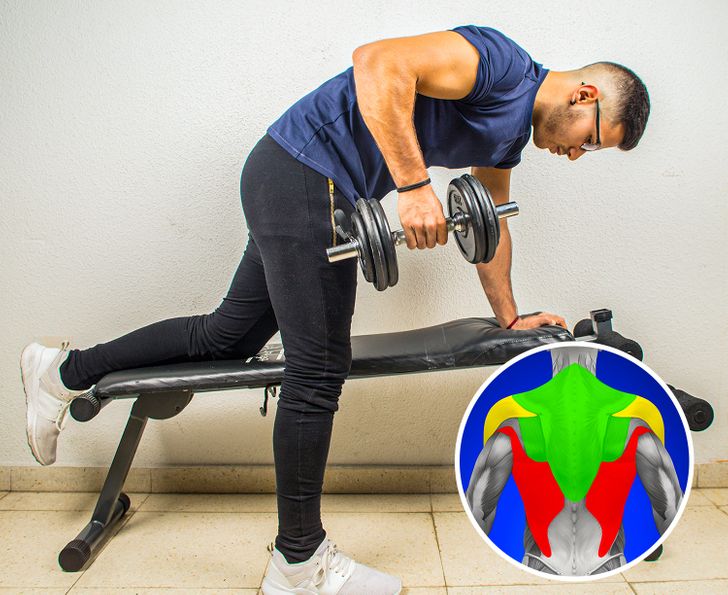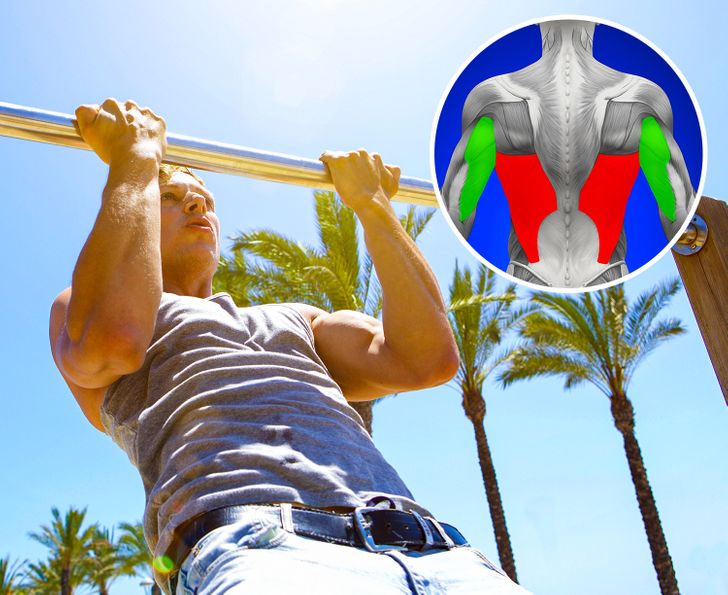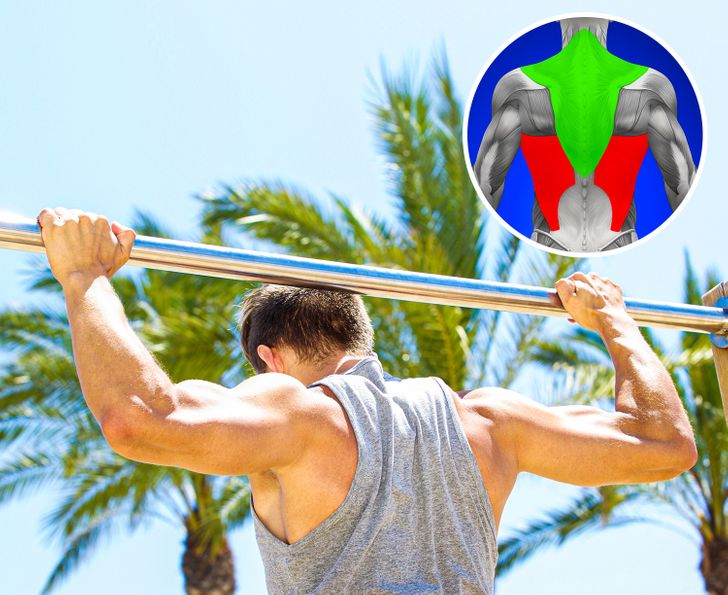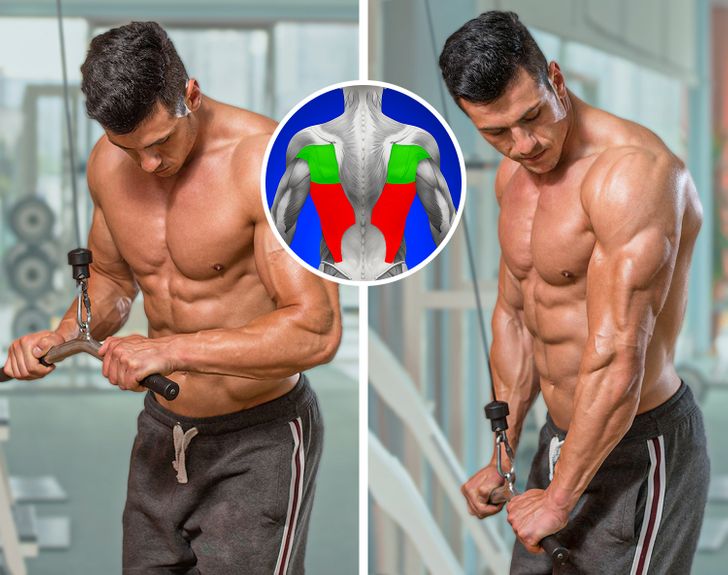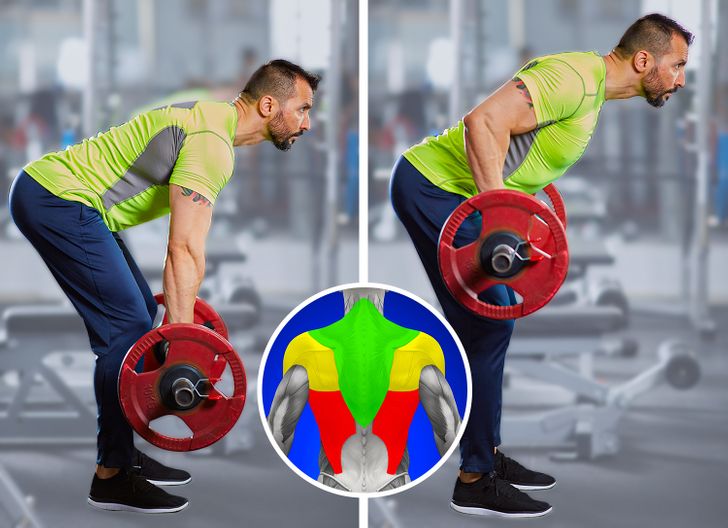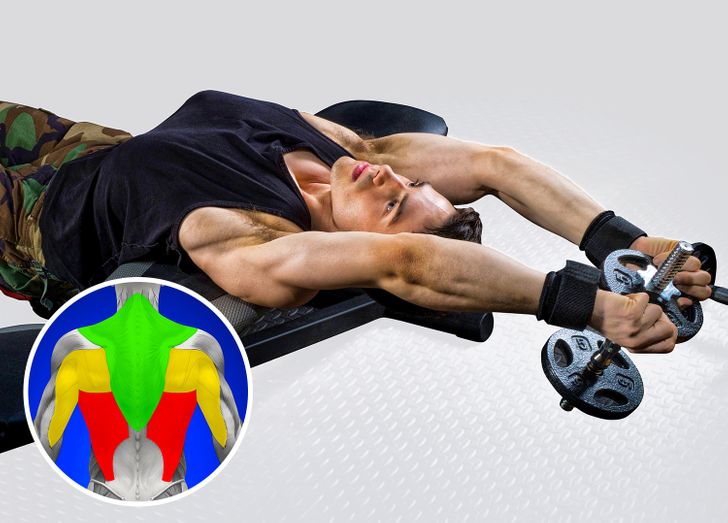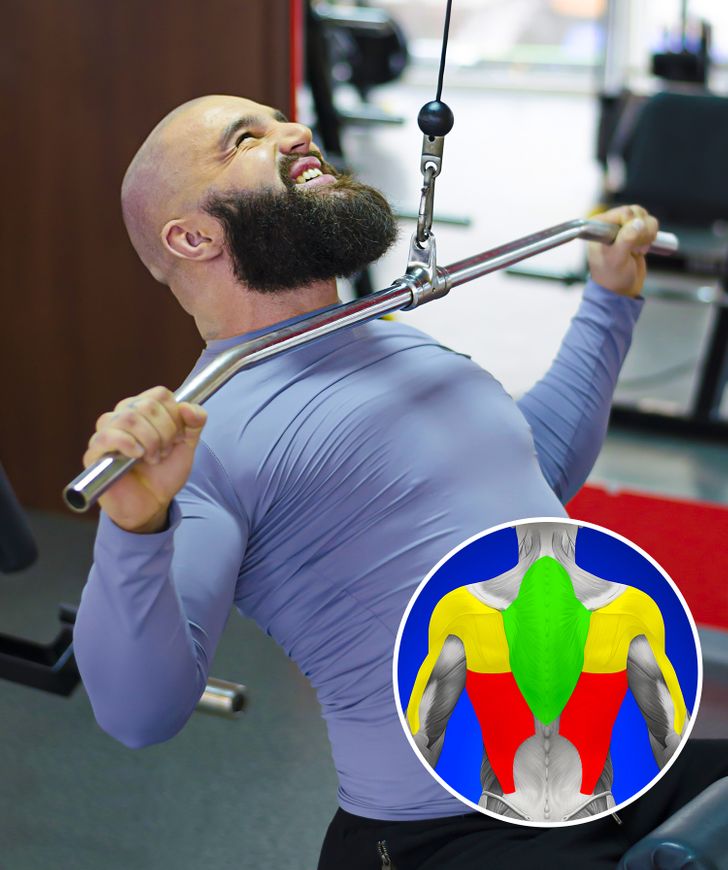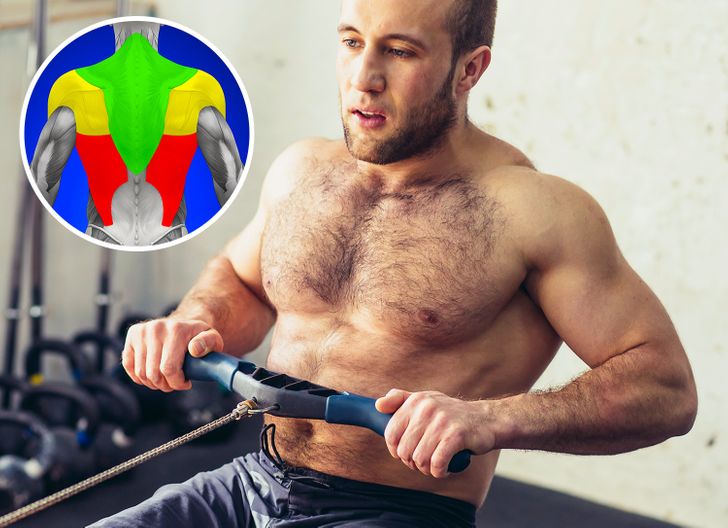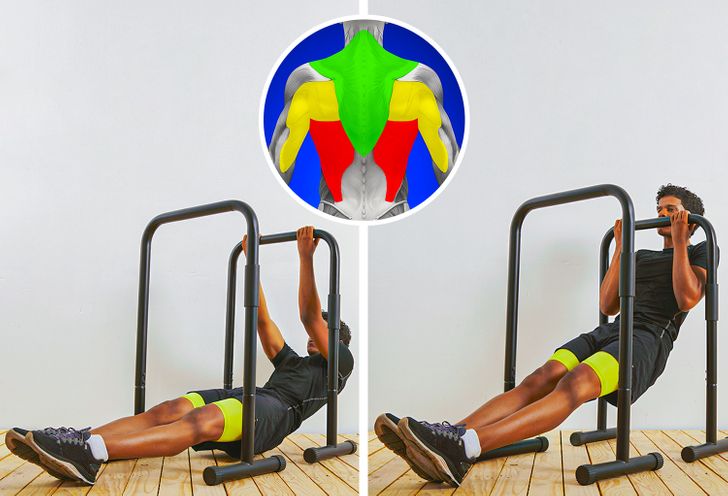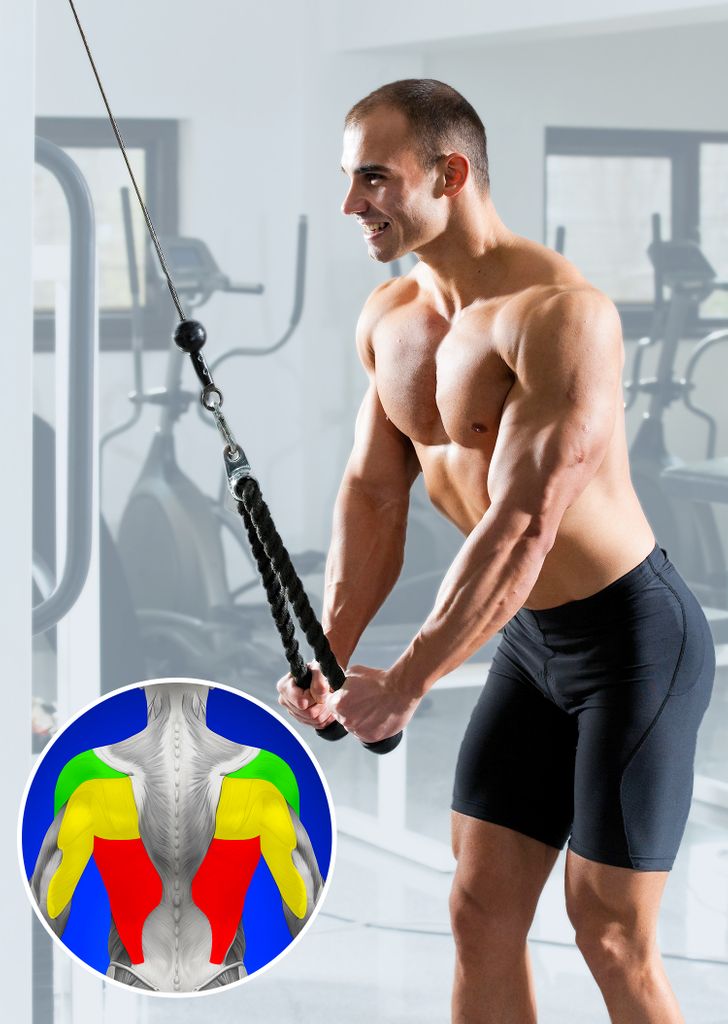my father decided to go to the gym, just recently. I think these will be really useful for gim :)
10 Effective Back Workout Exercises for Building Muscle
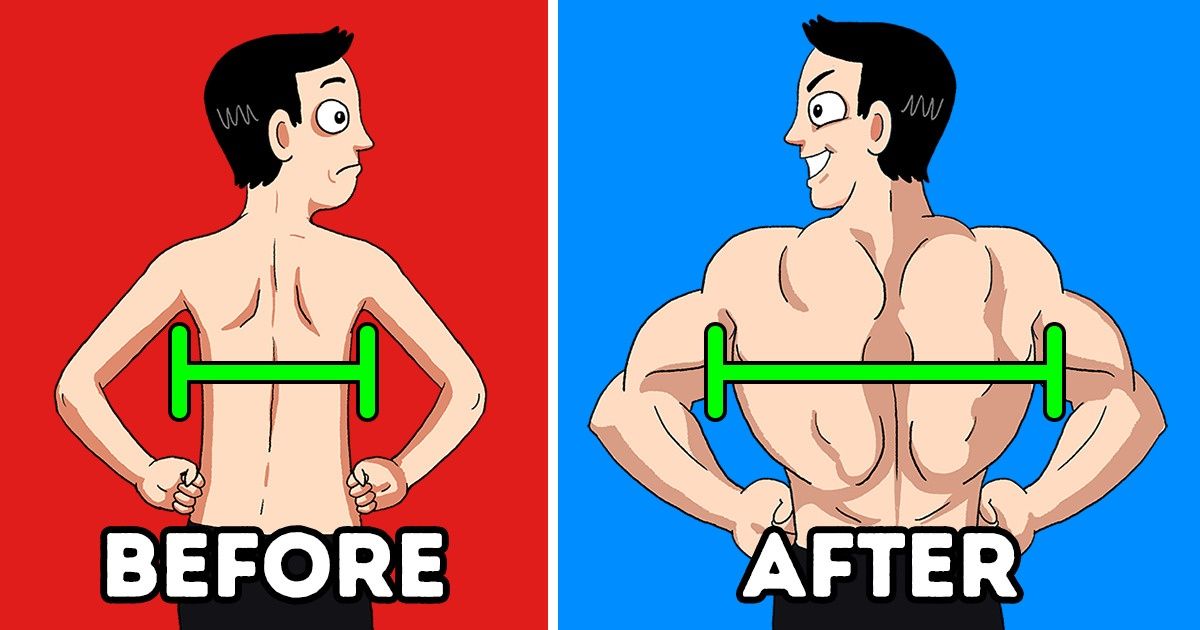
Want some effective back exercises for building muscle? Then you’ve come to the right place. Training your back has a lot of benefits, among which are improved posture, a stronger core, and a stunning appearance. All you need to do is choose the right exercises and perform them systematically, and the results will show up in no time.
1. One-arm dumbbell row
This back exercise is one that will probably never become outdated — it’s not a complicated workout and you only need one dumbbell to complete it. It works on one part of your body at once, so you will need to switch to the other side when finished. It not only benefits your back muscles, helping them to get bigger, but it also evens them out so any imbalances you might have will cease to exist.
Your lower back and stomach are also in motion here, so the exercise will work to stabilize the trunk of your body. In addition, it helps you burn calories over a period of time. Even some of the most famous bodybuilders put this routine at the top of their workout lists.
As a result of this workout, your posture will improve, you’ll be able to lift better in other areas of your body, and you will have a more powerful grip. Generally, powerlifters and Olympic fitness lovers benefit most from this exercise, but if you’re not one of those people, then you can work on it for your personal gains.
The one-arm dumbbell row is good for your lats, traps, rear deltoids, and triceps. For this exercise, you will need a flat bench and a dumbbell.
Initial position: Place your left knee on a flat bench — your other leg can stay on the floor. Your torso should be bent forward and parallel to the floor. Support yourself with your left hand placed on the bench.
What to do:
- Grab a dumbbell with your right hand (your palm should be facing inward) and keep your back straight and your arm extended.
- Bend your arm at the elbow and bring the dumbbell up to your chest. While doing this, you should feel the tension in your back and shoulder muscles instead of in your arms.
- When you reach the top, squeeze your shoulder and back muscles. Hold the position for a couple of seconds.
- Slowly start putting your hand down until your arm is fully extended.
- Repeat 40 times and switch to the other arm.
2. Close grip pull-ups
If you are new to pull-ups, then this might be the best option for you to begin with since it’s a bit easier than the regular, ordinary pull-ups people do. Although it may not seem like much of a contrast from the usual pull-up, once you start, you will see noticeable differences, one of them being the placement of your hands — they are closer to each other here.
This powerful exercise is famous for strengthening your upper back and biceps, but amazingly enough, it’s working your triceps too (the ones that have the push effect more than the pull). It helps to achieve a thicker back since there is a lot of pressure put on your inner lats. This goes to say that it’s an easy exercise that targets your arms and the middle of your back, although you might not have that attractive “V-shape” unless you perform a wide-grip pull-up.
Close-grip pull-ups are one of the variations of pull-up exercises, and they help to build the lats and biceps. You will need a pull-up bar to perform these.
Initial position: Grab the pull-up bar with your hands placed shoulder-width apart, thumbs pointed at each other, and a straight spine.
What to do:
- Breathe in, squeeze your glutes, and bring some tension to your shoulder blades.
- Your elbows should be pointing straight down to the floor and your lats should be activated.
- Bring your chin toward the bar, pulling your body up.
- Slowly bring your body back to the initial position.
- Repeat 10-15 times.
3. Wide-grip pull-ups
These kinds of workouts really help with your upper body muscles. It is just the opposite of a close-grip workout, as your hands are separate and full-on wide. But just like the close-grip, this one activates your lats as well — however, the difference is that it also activates your chest. They strengthen your hands as well. It’s best to do 2-3 sets with repetitions. Try to choose the number of times you do it based on how many times you can perform with good technique. You will need a pull-up bar for these too.
Initial position: Grab the pull-up bar with a grip that is wider than your body — your body and hands should form a “Y” shape together. The thumbs should be pointed at each other, spine straight.
What to do:
- Breathe in, squeeze your glutes, and bring some tension to your shoulder blades.
- Bring your chin toward the bar, pulling the whole body up.
- Slowly lower your body back down to the initial position.
- Repeat 10-15 times.
4. Standing cable pullover
Don’t let the thought of a cable machine scare you, it might even be much easier than dumbbells for you (since it’s a machine). It can even be seen as better than dumbbells because it can work each of your muscle groups while only using one.
There are some things that you might want to pay attention to while working on this exercise. Don’t forget to be aware of your core here as well because your core in this workout is there to help you stay stabilized. Also, try to pay attention to your elbows — they should not be over-bent since this can lead to working out your triceps instead of your back (which is your aim). You can keep them slightly bent but don’t lock them completely. Lastly, take a deep breath and don’t move too quickly. Although during some exercises going fast is good, it’s not the case with this one. A smooth and controlled movement is the way to go, and this may help you stay focused throughout as well.
Initial position: You will need a cable machine with a small bar attached to the top pulley to perform this exercise. Grab the bar, keep your back straight, and make sure your hands are shoulder-width apart.
What to do:
- Make sure your arms are at the same level and start pulling the attachment down in an arc.
- While doing this, squeeze your shoulder blades together and keep your core tight.
- As the attachment reaches your tights, pause for a couple of seconds and slowly return to the initial position.
- Repeat 30-40 times.
5. Reverse grip bent-over rows
This workout with dumbbells helps build both your strength and size, specifically in the lower and upper back. What’s good here is the fact that it targets almost all of the muscle areas on your back. It’s a very well-known exercise and can be loaded excessively. Your biceps and lats are also in action here, and your spine remains in the same position.
If you are a person with back problems, this workout shouldn’t post any issues if done properly. In fact, it might even help you, just try to use a low pulley row. If your back is healthy, try not to slouch and maintain the perfect form to avoid injuries.
Initial position: Stand straight with a slight bend in your knees, a bend at your waist, and bring your torso forward. Your back should be straight and your head should be kept up. Hold the barbell right in front of you and keep your arms perpendicular to the floor.
What to do:
- Keep the torso motionless, breathe out, and lift the barbell. Your elbows should be kept close to your body.
- After you bring the barbell up, squeeze your back muscles, and hold this position for a couple of seconds.
- Then very carefully bring the barbell down to your initial position.
- Repeat 10 times.
Warning: People with back problems should not perform this exercise.
Tip: You can use dumbbells instead of a barbell to perform this exercise.
6. Straight-arm dumbbell pullover
The straight-arm dumbbell pullover is a simple yet effective exercise for your back muscles, chest, arms, and abs. You will need a moderately heavy dumbbell and a flat bench for it.
The straight-arm dumbbell pullover is beneficial for strengthening your upper body in full motion and bettering the potency of your shoulder muscles. It is somewhat similar to the bench press; the key difference being the use of dumbbells for this one.
Usually, runners and tennis, badminton, rugby, and football players include this in their routine (since the use of overhead movement is very important here).
Initial position: Lay across a flat bench. Your feet should be at shoulder width and placed apart. Only your upper back should touch the bench.
What to do:
- Get a dumbbell. Put your hands up behind your head.
- Release the weight of the dumbbell and let it go as low as you can while holding it with your hands.
- Make sure you squeeze the muscles at the top of the motion and keep your wrists straight.
- Repeat 30-40 times.
7. Lat pulldown
The lat pulldown exercise works out your lats. You will need a cable machine with a wide bar attached to the top pulley to perform this exercise.
It works the widest muscle of your back that lightens posture and maintains your stability. Many people perform these workouts the wrong way, which is why an injury can happen easily occur. That’s why it’s crucial to keep your form right in order to see results as well.
It’s important to exhale when you pull the weight down and inhale as you pull it up. Also, try not to lean back too much when you pull the levers inward, as this won’t work the muscles you want. Also, stay in your seated position when you pull the levers up.
Initial position: Sit down on the bench of the cable machine and grab the pulley bar with your hands placed wider than shoulder-width (in a wide grip). Your hands should be straight, and the bar should be over your head. Lean your torso back at a 30-degree angle with your chest pulled forward.
What to do:
- Breathe out, pull the bar down toward your upper chest, and bring your shoulders and upper arms back.
- As you get into this position, squeeze the back muscles and hold it for a couple of seconds.
- Make sure that your upper torso is stationary and that your arms are the only things that are moving.
- Relaxing your shoulder blades, slowly bring the bar back to the initial position, and fully extend your arms. Inhale.
- Repeat 50-60 times.
8. Seated cable low row
The seated cable low row is good for working out your middle back muscles. You will need a low pulley row machine with a V-bar for this exercise.
Initial position: Sit on the machine and slightly bend your knees so that you can reach the handle with your arms stretched out, but without rounding your back.
What to do:
- Pull the attachment toward your torso, driving your elbows toward your hips.
- Your head, back, and spine should be aligned. Your chest is elevated and your whole core is engaged.
- When the attachment is near your torso, engage your lats and shoulder blades and hold this position for a couple of seconds.
- Slowly pull the attachment back returning to the initial position.
- Repeat 30-40 times.
9. Inverted bodyweight row
The inverted bodyweight row targets your middle back area. You will need any bar that you can adjust to your waist height or a Smith machine for this exercise.
Think of this back workout as a push-up, only on the other side (turned over). Dumbbells are not present here, and you will only need a bar. With a regular push-up, your hands would be on the floor, while with this one your arms are spread upward, reaching for the bar above you.
This is the kind of workout that can benefit nearly your whole body, including your hamstrings, grip strength, and even your glutes! If you want to make the exercise easier, simply raise the bar that you’re using higher so you don’t have to lay on the floor when you go back down (we all know the little ants might want to get a workout in). Also, it might be easier if your back is straighter.
Initial position: Adjust your bar to waist height and grab it with your arms positioned wider than shoulder-width. Your body should be underneath the bar, heels on the ground, arms fully extended, and your body should be straight.
What to do:
- Engage your shoulder blades, and pull the torso and body up.
- Hold the position for a couple of seconds.
- Slowly return to the initial position.
- Repeat 20 times.
10. Straight-arm pulldown
The straight-arm pulldown exercise develops your lats, upper back, rear deltoids, triceps, chest, and core. You will need a cable station and a rope handle attached to a high pulley.
One of the surprising and unique benefits of this exercise is the mind-muscle connection. It can work perfectly for people who can’t really sense their lats in action during an ordinary pulldown workout. Try to put this into your routine at the end of your workout, as this can get your blood pumping vastly, resulting in muscle growth.
Initial position: Once your rope handle is attached to the high pulley of a cable station, grab the ends in your hands and face the station. Pull your shoulder blades back, together, and down. Pull your ribs down, tuck your tailbone under, and brace your core.
What to do:
- Move your hips back, forming a 30-45-degree angle with your body.
- Your arms are in front of you, fully extended. You should feel the tension in the cable and in your back muscles. Put your feet shoulder-width apart.
- In an arcing motion, very slowly bring your arms down until your hands align with your hips. Your elbows should be locked down.
- Hold this position for a couple of seconds, then slowly return to your initial position.
- Repeat 25-30 times.
While performing this exercise, it’s important to keep your elbows fully extended and locked. If you start bending, your triceps will get involved and this will reduce the positive effect on your lats.
Comments
Cool, exercises for every muscle group!
Love that you have exercises for back, these are really useful. The Internet is full of arm exercises and almost no one tells about the importance of back
Really nice exercises. Some of these back exercises are quite popular. I also have some popular workouts in my checklists from this Fitness website. I would recommend it to you too.
Related Reads
15+ Times the Universe Gave People a Reason to Smile

I Refused to Go to Work After a Family Emergency—HR Got Involved
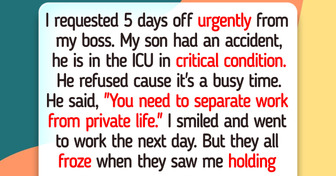
12 Dates That Started Like a Hollywood Love Story, but Ended Far From It

I Got Fired the Day Before My Vacation—And HR’s Policy Was Their Biggest Mistake

I Refuse to Keep Supporting My Daughter and Her 5 Kids for Free

I Was Shamed for Being a Single Mom — but My Little Girl, 6, Had the Last Word

My MIL Mocked Me at My Husband’s Birthday Party—I Gave Her a Brutal Reality Check

10 Stories of Kindness That Show Angels Walk Among Us Every Second of Every Day

My DIL Excluded Me From Our Family Trip Photos—But She Didn’t Expect My Revenge

I Tried to Be the Husband My Wife Needed — She Figured Out What I Was Actually Doing
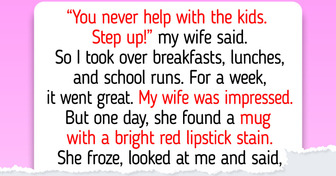
I Absolutely Refuse to Delay My Retirement to Save My Spoiled Daughter and Her Son

10 Stories That Prove Kindness Costs Nothing Yet Heals Everything

